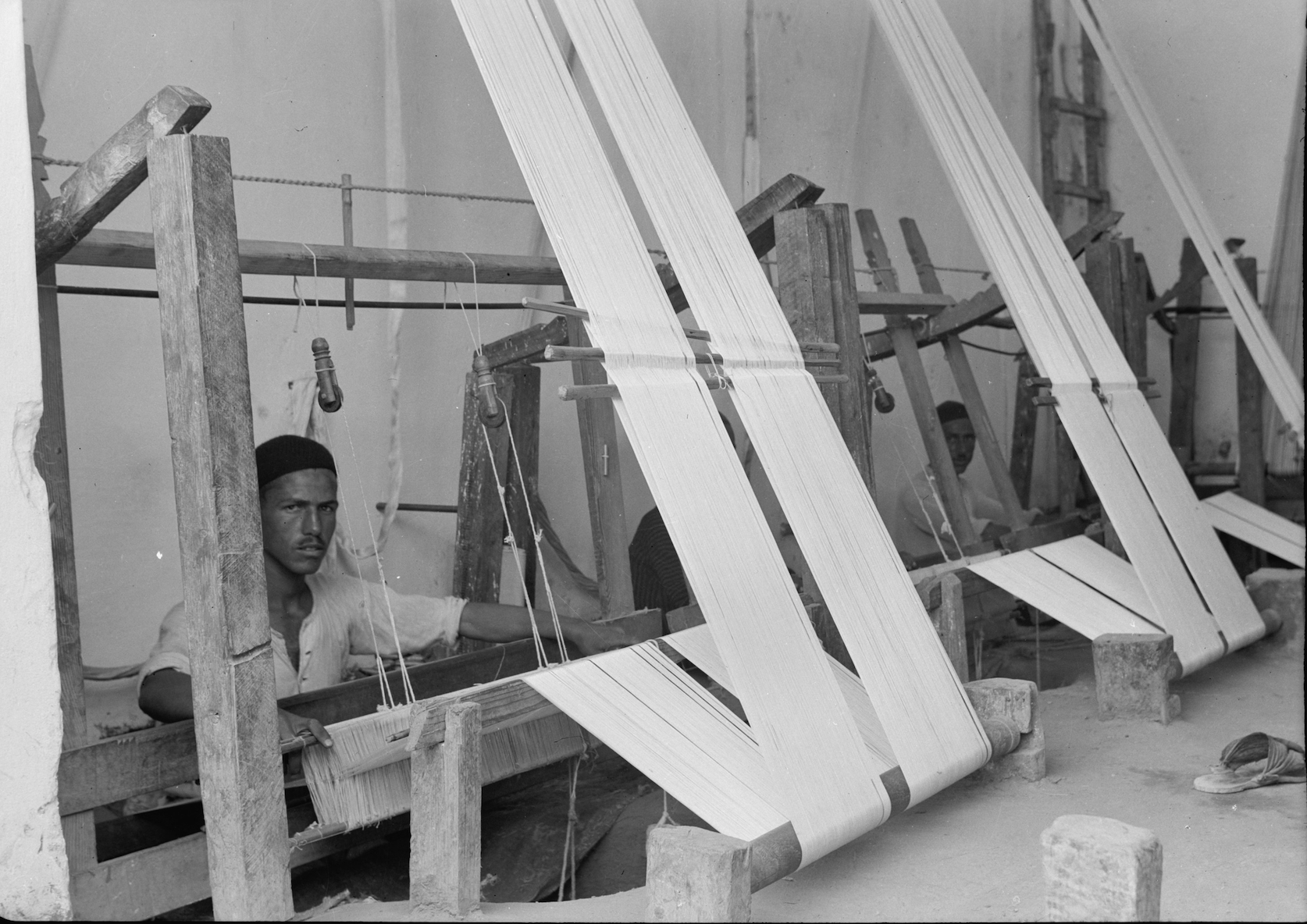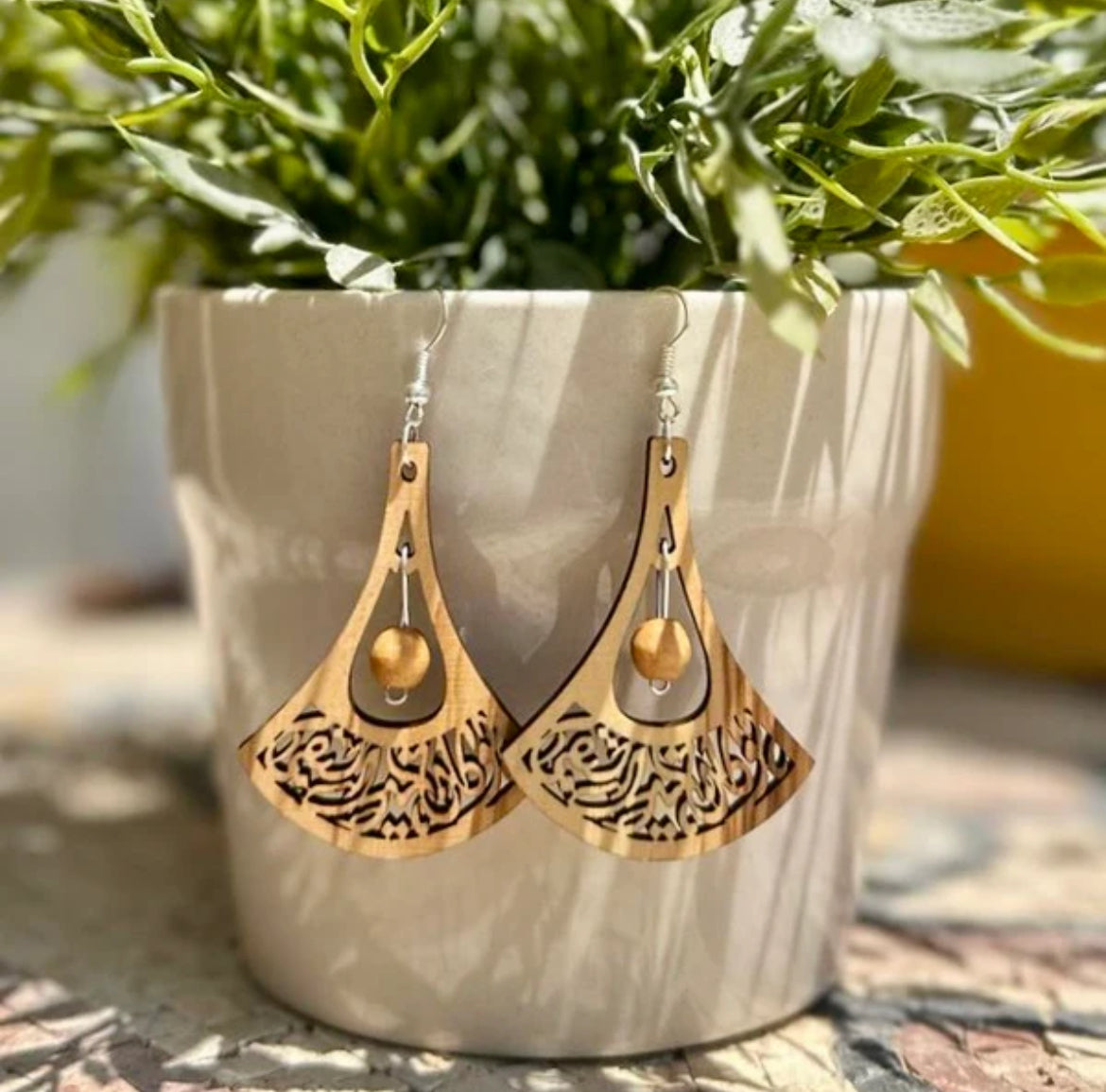
Majdalawi Fabric: The Endangered Jewel of Palestinian Textiles
Majdalawi fabric is one of the rarest treasures of Palestine’s textile heritage. Once handwoven in the southern coastal town of Al-Majdal, this shimmering cloth was prized for its bold stripes, rich sheen, and unmatched craftsmanship.

Today, only a one Palestinian artisan keeps this endangered weaving tradition alive—passing thread through thread as an act of memory, resistance, and cultural pride. Most of the Majdalawi fabric on the market today is hand woven in Syria.
Palestine’s Historic Textile Industry
For centuries, Palestinian textiles were woven from land, labor, and love. Farmers grew flax and cotton, herders raised sheep for wool, and artisans embroidered, dyed, and handwove fabrics that reflected regional identities.
Some key centers of production included:
• Hebron – wool and felting
• Gaza & Jaffa – cotton growing and export
• Bethlehem & Ramallah – silk appliqué and embroidery
• Al-Majdal – the heart of Palestinian weaving
Among these traditions, Majdalawi fabric stood out as one of the most luxurious and sought-after textiles.
Al-Majdal: The Lost Weaving Capital of Palestine
Before 1948, Al-Majdal was a vibrant Palestinian town known for citrus groves, cotton fields, and a thriving textile market. Its artisans produced handwoven cotton of extraordinary quality, with Majdalawi cloth as its signature creation.

But in 1948, during the Nakba, the town’s 11,000 residents were forcibly expelled and its textile industry was destroyed. Al-Majdal became part of modern-day Ashkelon, and the weaving tradition nearly disappeared.
Today, Majdalawi fabric is one of the last surviving threads that connect us to this erased town.
What Makes Majdalawi Fabric Special?
Majdalawi fabric is woven on traditional wooden looms, using:
• A black cotton or silk warp
• Colorful weft threads in red, green, purple, or gold
• Precise handweaving techniques passed down through generations
The result is a bold striped textile, soft yet durable, with a sheen that makes it instantly recognizable.
Every piece is unique, taking days of careful labor and artistry.
Explore our Handmade Palestinian Girl Doll with Tatreez Thob, featuring Majdalawi weaving.
Traditional Uses of Majdalawi Fabric
Historically, Majdalawi fabric appeared in:
• Palestinian thobes (traditional dresses), especially in coastal towns
• Bridal and festive garments symbolizing wealth and beauty
• Men’s sashes, robes, and head coverings
• Regional trade routes across the Levant and Egypt
In women’s clothing, Majdalawi often decorated the qabbeh (chest panel), sleeves, and hem—marking not just elegance but cultural identity.
Cultural Significance: Why Majdalawi Matters
Majdalawi is not only a textile—it is a cultural archive.
It represents:
• Palestinian craftsmanship – mastery of loom and design
• Heritage preservation – a tangible memory of Al-Majdal
• Resistance – survival of culture despite displacement and occupation
• Generational continuity – artisans teaching new weavers
As one master weaver in Gaza explains: “When I weave Majdalawi, I bring back the streets of Al-Majdal.”

The Future of Majdalawi Weaving
Today, Majdalawi weaving is critically endangered:
• In Gaza, all weavers have been displaced and the looms destroyed. There is one weaver who has begun weaving from the diaspora in Cairo.
• In the West Bank and diaspora, women’s cooperatives repurpose Majdalawi into modern designs.
• Cultural groups document the technique to ensure it survives.
But without global support, this craft may vanish.
Weaving Memory into Survival
Majdalawi fabric is more than cloth. It is the sound of looms echoing through a vanished town, the rhythm of hands passing thread to thread, the resilience of Palestinians whose culture refuses to unravel
When you shop handmade Palestinian crafts, you preserve heritage, empower artisans, and carry forward centuries of artistry.
Every purchase from HandmadePalestine.com helps keep this legacy alive—one stitch at a time.
How You Can Help
• Share this blog to raise awareness of endangered Palestinian weaving
• Shop Fair Trade Palestinian crafts: Explore our Textile Collection
• Subscribe to our newsletter for artisan stories and new arrivals
Weaving is our history. Preserving it is our future.









Leave a comment
This site is protected by hCaptcha and the hCaptcha Privacy Policy and Terms of Service apply.